Plagiarism Checker
Ensure every word is your own with Grammarly’s AI-powered plagiarism checker, which uses advanced AI to detect plagiarism in your text and check for other writing issues.
Add your text and click Scan for plagiarism to see your results.
- No plagiarism found–––
- Grammar–––
- Spelling–––
- Punctuation–––
- Conciseness–––
- Readability–––
- Word choice–––
- Additional issues–––
Make the grade with our AI plagiarism checker
Your ideas are unique, and your writing should reflect that. Grammarly’s AI-powered plagiarism detector makes it easy to express your thoughts in a way that’s clear, original, and full of academic integrity.
Instantly find plagiarism by pasting or uploading your research paper, essay, or article.
Quickly ensure integrity by checking your work against billions of web pages with one click.
Get an originality score for your document to see how unique your ideas are.
Speed up work with recommendations on what and how to cite, as well as real-time feedback on your writing.
Beyond plagiarism detection: Speed up your work
Go beyond plagiarism detection to make your writing shine. From final papers to internship applications, Grammarly’s AI writing assistance improves your writing and teaches you how to use generative AI responsibly so you’re a step ahead at school and when entering the workforce.
Know your work is
one-of-a-kind
Grammarly helps you check your content for potential plagiarism and AI use so you can rest assured that what you're submitting is your original work.
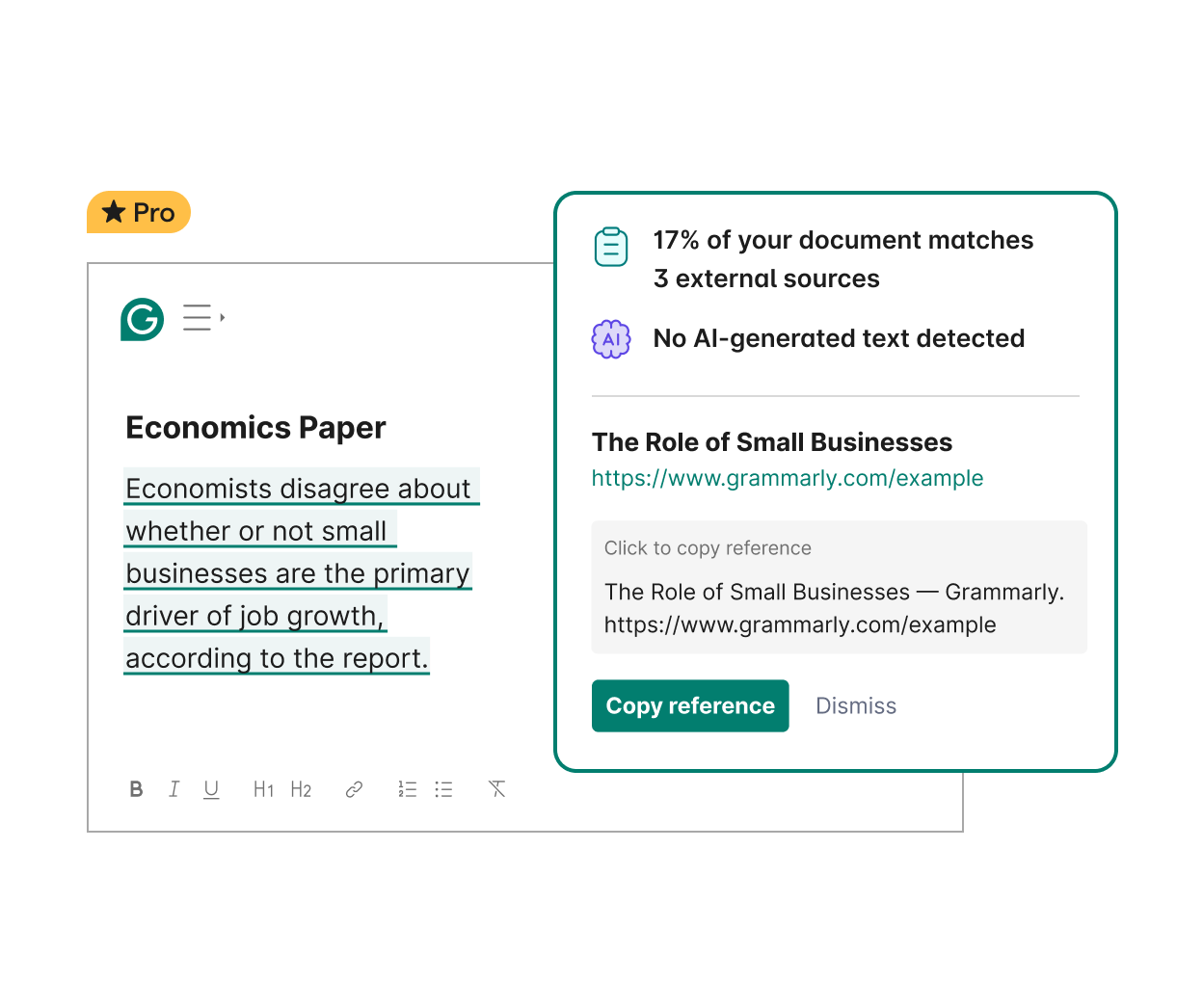
Bring transparency to your work
Using a variety of text sources in your content? Grammarly Authorship automatically categorizes your text based on where it came from (generative AI, an online database, typed by you, etc.) so that you can easily show your work and confidently submit your most original writing.
Authentic authorship
Ensure your citations are accurate
Catch stray periods, misplaced parenthesis, and other formatting issues in your style of choice—APA, MLA, or Chicago.
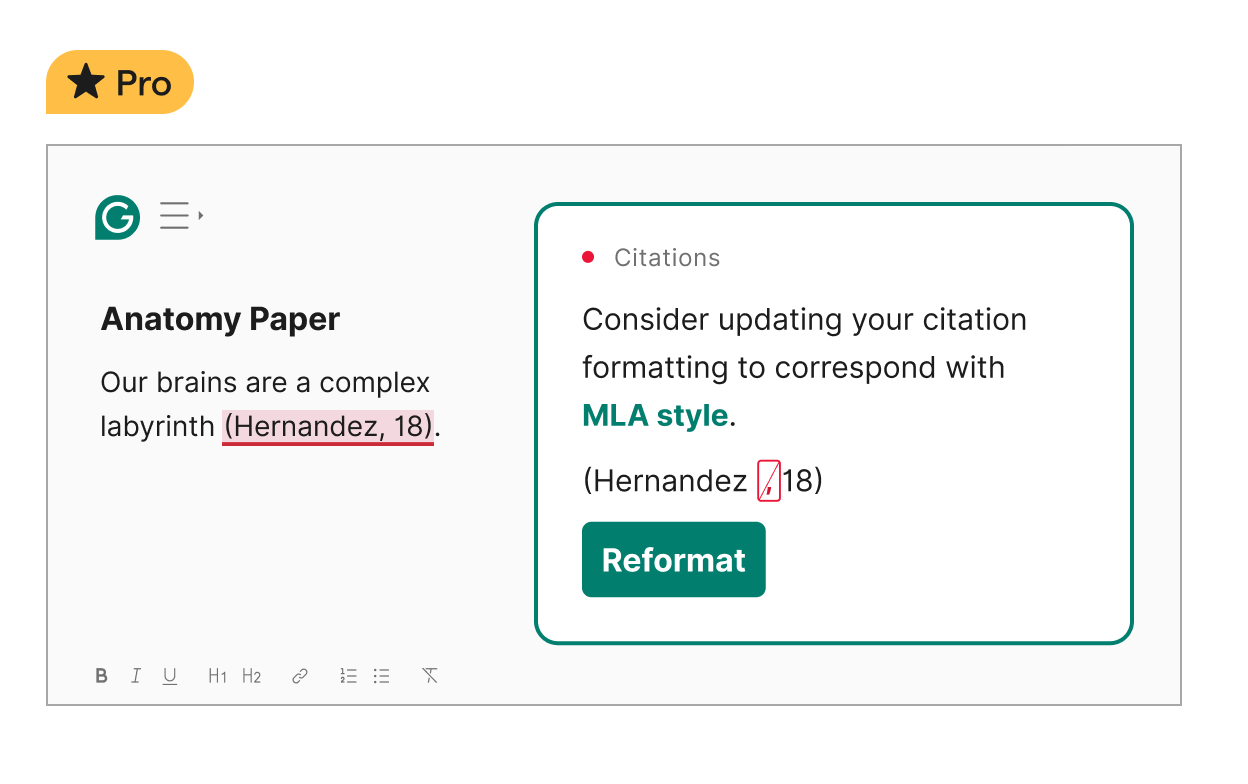
Easily improve your writing
Clean up typos, grammatical mistakes, and misplaced punctuation in just a few clicks.
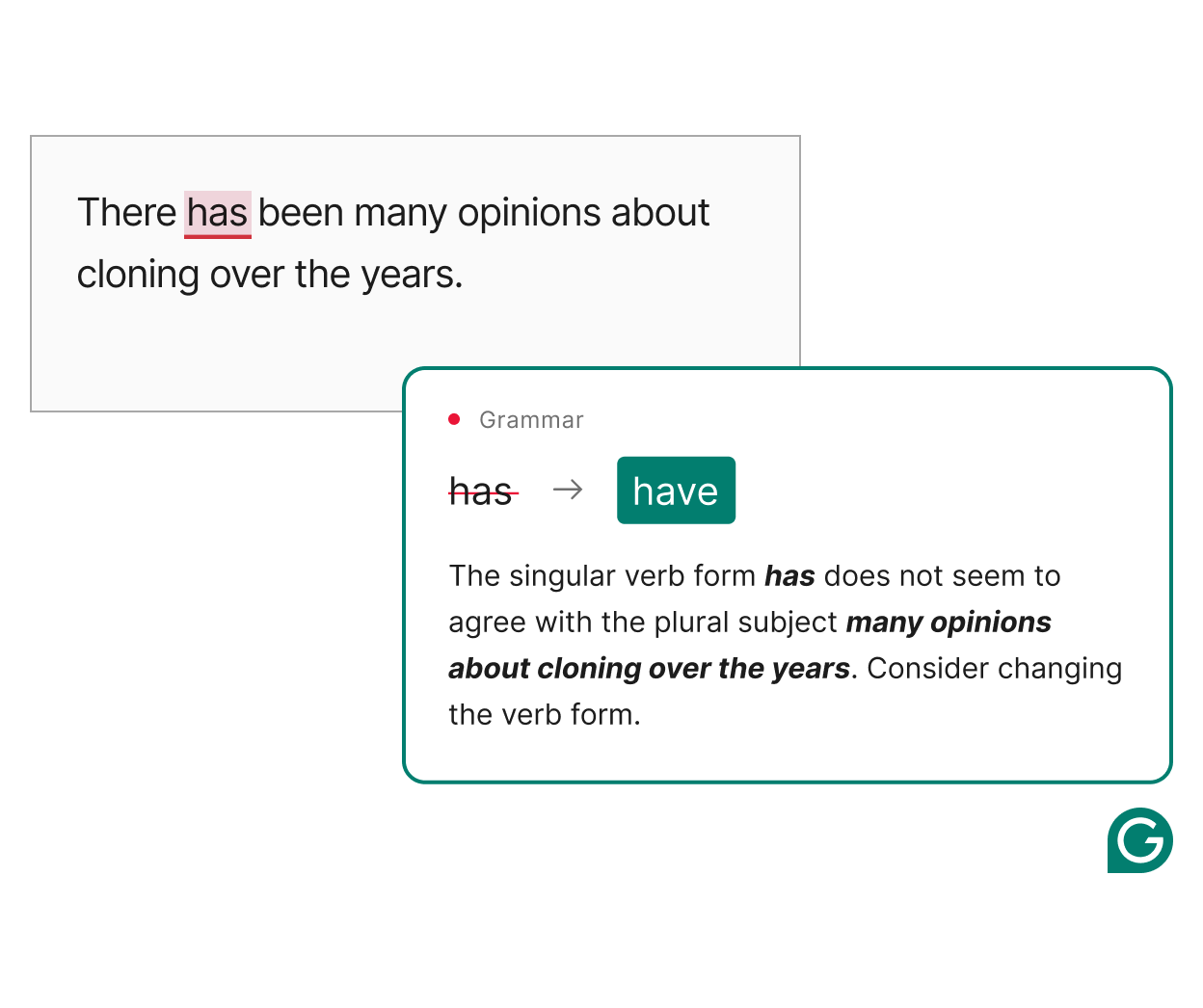
Accurately, effortlessly disclose AI use
Maintain academic integrity with suggestions about when and how to acknowledge generative AI use.
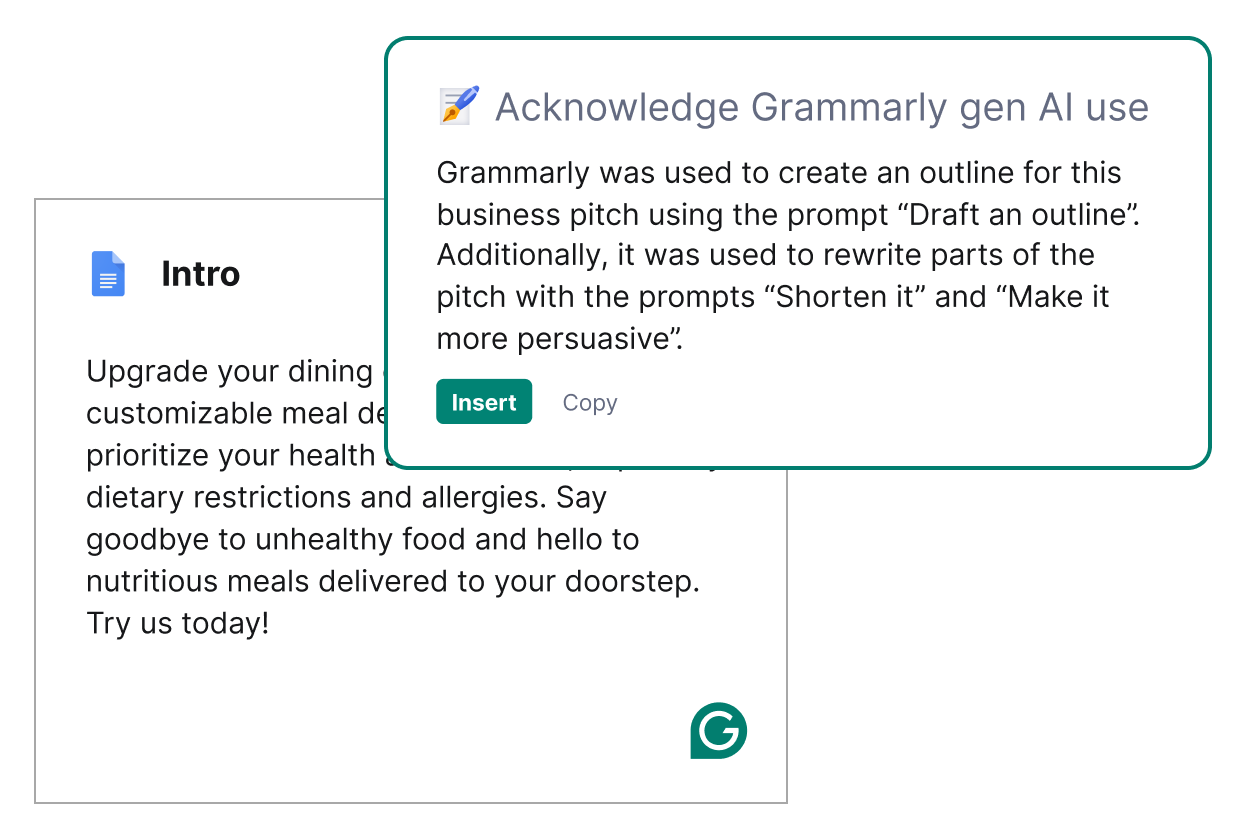
Know your work is
one-of-a-kind
Grammarly helps you check your content for potential plagiarism and AI use so you can rest assured that what you're submitting is your original work.

Bring transparency to your work
Using a variety of text sources in your content? Grammarly Authorship automatically categorizes your text based on where it came from (generative AI, an online database, typed by you, etc.) so that you can easily show your work and confidently submit your most original writing.
Authentic authorship
Ensure your citations are accurate
Catch stray periods, misplaced parenthesis, and other formatting issues in your style of choice—APA, MLA, or Chicago.

Easily improve your writing
Clean up typos, grammatical mistakes, and misplaced punctuation in just a few clicks.

Accurately, effortlessly disclose AI use
Maintain academic integrity with suggestions about when and how to acknowledge generative AI use.

Trusted by over 3,000 institutions
























































94% of students say Grammarly Pro helped improve their grades.
“I absolutely love Grammarly when writing. I especially love revising even the most mundane of lines that hit a plagiarism result, because seeing 0% plagiarism is what I live for. ”

@chao_mbogho
Ph.D. and lecturer, Kenya
“Essentially, Grammarly offers the same features as a thesaurus, a quality grammar-checking program, and a plagiarism checker. While you can purchase each of these tools separately elsewhere, Grammarly combines them, which is actually quite nice.”

Brandy Cross
Freelance writer, Texas
Frequently asked questions
What is plagiarism?
You’re working on a paper, and you’ve just written a line that seems kind of familiar. Did you read it somewhere while you were researching the topic? If you did, does that count as plagiarism? Now that you’re looking at it, there are a couple of other lines you borrowed from somewhere. You didn’t bother with a citation when writing because you didn’t plan to keep those lines. But now they’re an important part of your paper. Is it still plagiarism if they make up less than a paragraph?
Using someone else’s text without attribution is plagiarism, whether you mean to do it or not. In fact, a writer can even commit plagiarism by using their own work without proper citation.
Unintentional plagiarism of even a sentence or two can have serious consequences. For students, plagiarism often means a failing grade, academic probation, or worse. Fortunately, it’s easy to ensure the authenticity of your work by using a plagiarism checker. Doing so will help you spot any unintentional use of others' words or ideas and prevent academic consequences in the future.
Using someone else’s text without attribution is plagiarism, whether you mean to do it or not. In fact, a writer can even commit plagiarism by using their own work without proper citation.
Unintentional plagiarism of even a sentence or two can have serious consequences. For students, plagiarism often means a failing grade, academic probation, or worse. Fortunately, it’s easy to ensure the authenticity of your work by using a plagiarism checker. Doing so will help you spot any unintentional use of others' words or ideas and prevent academic consequences in the future.
What are the different types of plagiarism?
You might be surprised to learn there are eight types of plagiarism:
1. Complete plagiarism is an overt form of plagiarism. This happens when you present someone else’s work as your own, such as buying an essay or using another’s work without credit.
2. Direct plagiarism is copying sections of another’s work without crediting the author rather than copying the entire piece like complete plagiarism.
3. Paraphrasing plagiarism is rewording someone else's work without credit. Even if the ideas aren’t in the original words, this form of paraphrasing is still plagiarism.
4. Self-plagiarism is reusing your own previous work in a new context. Even if it’s your original thought, this can be considered plagiarism.
5. Patchwork plagiarism, also known as mosaic plagiarism, involves integrating plagiarized material with your own work, often subtly.
6. Source-based plagiarism consists of citing sources in a misleading way. For instance, a writer may refer to a secondary source in their work but only cite the primary source from which the secondary source was taken. This form of plagiarism can also include making up sources or citing incorrect sources.
7. Accidental plagiarism, as the name suggests, happens when the author plagiarizes content unintentionally. It can include failing to cite sources, not putting quotes around cited material, and making mistakes when citing sources. Despite being accidental, this type of plagiarism still carries serious consequences.
8. AI plagiarism is using writing created with generative AI without disclosing its origin. When you use gen AI to write, summarize, or paraphrase, you need to include a citation.
1. Complete plagiarism is an overt form of plagiarism. This happens when you present someone else’s work as your own, such as buying an essay or using another’s work without credit.
2. Direct plagiarism is copying sections of another’s work without crediting the author rather than copying the entire piece like complete plagiarism.
3. Paraphrasing plagiarism is rewording someone else's work without credit. Even if the ideas aren’t in the original words, this form of paraphrasing is still plagiarism.
4. Self-plagiarism is reusing your own previous work in a new context. Even if it’s your original thought, this can be considered plagiarism.
5. Patchwork plagiarism, also known as mosaic plagiarism, involves integrating plagiarized material with your own work, often subtly.
6. Source-based plagiarism consists of citing sources in a misleading way. For instance, a writer may refer to a secondary source in their work but only cite the primary source from which the secondary source was taken. This form of plagiarism can also include making up sources or citing incorrect sources.
7. Accidental plagiarism, as the name suggests, happens when the author plagiarizes content unintentionally. It can include failing to cite sources, not putting quotes around cited material, and making mistakes when citing sources. Despite being accidental, this type of plagiarism still carries serious consequences.
8. AI plagiarism is using writing created with generative AI without disclosing its origin. When you use gen AI to write, summarize, or paraphrase, you need to include a citation.
How can I avoid plagiarism in my written work?
Understanding the various forms of plagiarism is the first step in preventing it. Next, it’s critical to cite your sources and credit the original author or generative AI (yes, gen AI is a source) when using work or an idea that isn’t your own.
As a final step, you can use a free plagiarism detector or plagiarism remover to check for copyright infringement. Grammarly’s online plagiarism checker can help ensure you correctly identified and cited anything in your text that isn’t 100 percent unique. It can also help you properly disclose and cite the use of AI in your writing.
Grammarly’s online plagiarism checker is designed for academia, but it’s a valuable tool for anyone wanting to create original, plagiarism-free work. Whether you’re a student writing an essay, a teacher grading papers, or a writer working on original content for the web, Grammarly’s plagiarism detector will save you time and help you avoid writing mistakes.
As a final step, you can use a free plagiarism detector or plagiarism remover to check for copyright infringement. Grammarly’s online plagiarism checker can help ensure you correctly identified and cited anything in your text that isn’t 100 percent unique. It can also help you properly disclose and cite the use of AI in your writing.
Grammarly’s online plagiarism checker is designed for academia, but it’s a valuable tool for anyone wanting to create original, plagiarism-free work. Whether you’re a student writing an essay, a teacher grading papers, or a writer working on original content for the web, Grammarly’s plagiarism detector will save you time and help you avoid writing mistakes.
How do you check for plagiarism in written work?
While you can check citations and references manually, this may take a very long time. You also risk missing an instance of plagiarism that an instructor could later detect.
To be 100 percent confident when submitting your work, find the best plagiarism checker for your needs and incorporate it into your writing and editing process to check for plagiarism quickly and easily.
Grammarly’s plagiarism checker can quickly detect plagiarism from billions of web pages and from ProQuest’s academic databases. Grammarly will check for originality in your text and tell you whether or not there is any duplicate content. Our Premium plagiarism check feature highlights passages that require citations, allowing you to remove plagiarism and cite your sources easily.
To be 100 percent confident when submitting your work, find the best plagiarism checker for your needs and incorporate it into your writing and editing process to check for plagiarism quickly and easily.
Grammarly’s plagiarism checker can quickly detect plagiarism from billions of web pages and from ProQuest’s academic databases. Grammarly will check for originality in your text and tell you whether or not there is any duplicate content. Our Premium plagiarism check feature highlights passages that require citations, allowing you to remove plagiarism and cite your sources easily.
How can I accurately cite my sources?
It’s always an excellent idea to learn citation fundamentals and familiarize yourself with your style guide’s correct citation format, whether that’s APA, MLA, or Chicago.
Citing sources can be tedious work, though, and it’s easy to make mistakes. You can save valuable time by using Grammarly Free’s auto-citations feature, which instantly creates citations from millions of articles across 20+ popular research databases and websites, such as Wikipedia, Frontiers, PLOS One, ScienceDirect, SAGE Journals, PubMed, Elsevier, DOAJ, arXiv, and Springer.
You can even double-check any existing citations with Grammarly Premium’s citation style formatting, which catches parentheses, periods, and other punctuation that’s not following your preferred style guide.
Citing sources can be tedious work, though, and it’s easy to make mistakes. You can save valuable time by using Grammarly Free’s auto-citations feature, which instantly creates citations from millions of articles across 20+ popular research databases and websites, such as Wikipedia, Frontiers, PLOS One, ScienceDirect, SAGE Journals, PubMed, Elsevier, DOAJ, arXiv, and Springer.
You can even double-check any existing citations with Grammarly Premium’s citation style formatting, which catches parentheses, periods, and other punctuation that’s not following your preferred style guide.
How does Grammarly’s plagiarism checker work?
Grammarly’s AI-powered plagiarism checker works by analyzing your text and cross-referencing it against a vast database of over 16 billion web pages and academic papers in ProQuest’s databases. When a match is found, the tool flags specific sentences, provides source references, and calculates an overall originality score for your document.
Beyond plagiarism detection, Grammarly uses advanced AI to deliver grammar, spelling, punctuation, and style feedback, helping you refine your writing’s clarity, tone, and conciseness. When you run a plagiarism check, you’ll also get an instant report showing originality results and a summary of other writing issues in your document.
Grammarly is committed to responsible AI practices, ensuring that your privacy is protected. Your text will never be publicly searchable or stored in any database accessible by others.
Beyond plagiarism detection, Grammarly uses advanced AI to deliver grammar, spelling, punctuation, and style feedback, helping you refine your writing’s clarity, tone, and conciseness. When you run a plagiarism check, you’ll also get an instant report showing originality results and a summary of other writing issues in your document.
Grammarly is committed to responsible AI practices, ensuring that your privacy is protected. Your text will never be publicly searchable or stored in any database accessible by others.
Is plagiarism detection the same as AI detection?
Plagiarism detection and AI detection are not the same. Plagiarism detection involves comparing a piece of writing to a vast database of previously published works to identify any similarities.
AI detection, as it relates to writing, refers to the ability of artificial intelligence to identify text that was created using AI. However, the increasingly human-like quality of AI writing has made it challenging to detect AI-created content. While AI detection tools may exist, this technology is not reliable.
Grammarly encourages students to honor guidelines from educators and educational institutions and declare their use of AI in their writing if that’s what’s asked of them. To help, Grammarly will show where and how to disclose AI use.
AI detection, as it relates to writing, refers to the ability of artificial intelligence to identify text that was created using AI. However, the increasingly human-like quality of AI writing has made it challenging to detect AI-created content. While AI detection tools may exist, this technology is not reliable.
Grammarly encourages students to honor guidelines from educators and educational institutions and declare their use of AI in their writing if that’s what’s asked of them. To help, Grammarly will show where and how to disclose AI use.
Does Grammarly offer other free AI writing tools?
Yes! Grammarly provides a range of AI-powered writing tools, including:
- Grammar Checker: Catch and correct grammar, spelling, and punctuation mistakes.
- Plagiarism Checker: Detect potential plagiarism and add citations.
- Cover Letter Generator: Quickly create professional cover letters.
- AI Content Detector: Identify AI-generated text in your writing.
Advanced AI that transforms your writing
Grammarly streamlines every step of the writing process, from brainstorming to final edits, ensuring clear, confident, and efficient communication.
Learn more about AI at Grammarly
Learn more about AI at Grammarly

Plagiarism and citations 101
Ready to dive deeper into the world of plagiarism and citations? Learn about the differences in citation styles, the most effective strategies for avoiding plagiarism, and more.
More academic writing support from Grammarly
Beyond detecting plagiarism in your writing, Grammarly can help you streamline your citations, distill your content with clarity and conciseness, and sharpen every sentence.
Instantly paraphrase
Quickly reword text for essays, emails, articles, and more with Grammarly's paraphrasing tool.
Paraphrasing Tool →
Paraphrasing Tool →
Ace every essay
Ensure your essays are clear, mistake-free, and well-worded with Grammarly's essay checker.
Essay Checker →
Essay Checker →
Cite in seconds
Get well-formatted APA, MLA, and Chicago-style citations with Grammarly's citation generator.
Citation Generator →
Citation Generator →
Detect AI content
Easily identify AI-generated content in your writing with the help of Grammarly’s AI detector.
AI Detector →
AI Detector →
Make your writing best-in-class
Join the 40 million people who use Grammarly to transform their writing every day.
